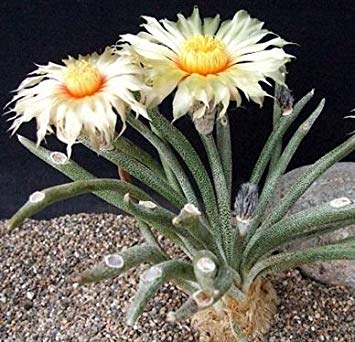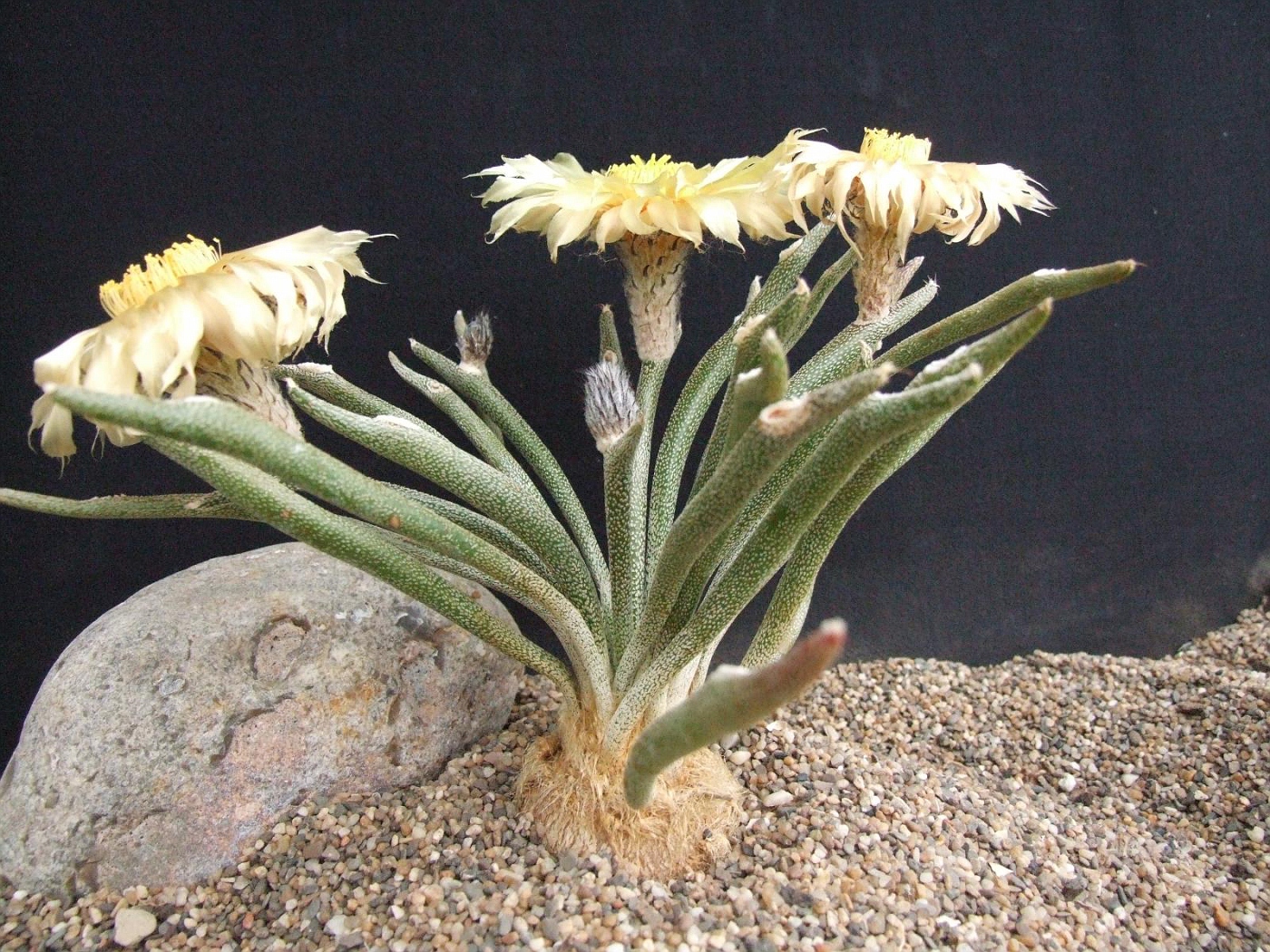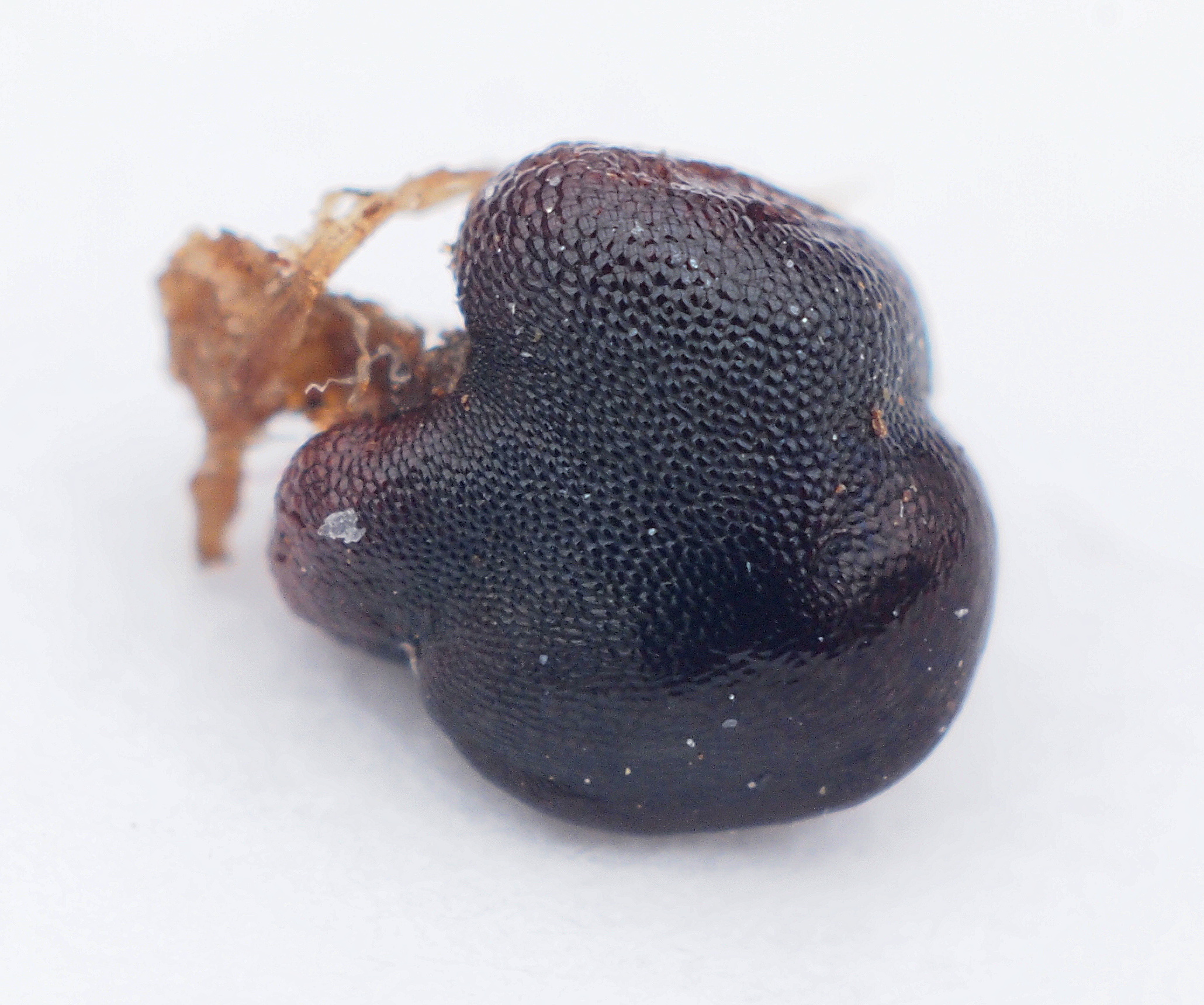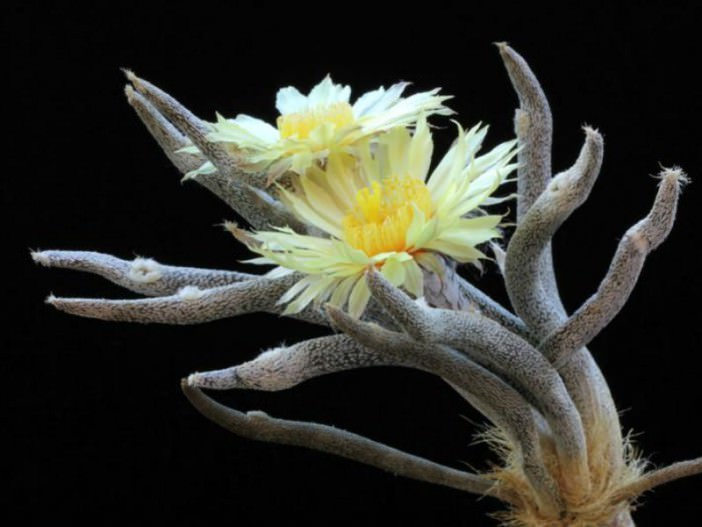Cactus Digitostigma also known as Astrophytum Caput-medusae, species, is a cactus very popular as an ornamental and decorative cactus in gardening and among cactus collectors, for the rarity of its morphology and for the beauty of its flowers.

Its origin is from Mexico, exactly from the northern zone, Nuevo León and Tamaulipas, at altitudes of 100 to 200 meters.
It was discovered in 2002, by Mexican botanists Carlos Velazco and Manuel Narváez de los Reyes.
It only has one species, Digitostigma Caput-medusae.
The name of caput-medusae, derives from the Latin word “caput”, which means head and the Greek “medusae”, which comes from Greek mythology, ” the woman whose blond hair turned into snakes and whose eyes turned objects into stone , being killed by Perseus . “
It has a high commercial value, since they are difficult to get their seeds, to the taste of collectors and as an ornamental plant.
Table of Contents
Description of the Digitostigma caput-medusae, Astrophytum Caput-medusae.
It is a cactus that grows solitary or sometimes grouped, up to about 20 specimens.
It has a very small stem, generally cylindrical, even of ribs and with bristles or hairs that cover the neck and the apex of the stem.
It does not exceed 12 cm in height, nor 6 cm in diameter.

It has 3 to 8, sometimes up to 16/17 cylindrical ribs. They are covered in leathery cartilage, in the form of a slightly rough texture and whitish spots.
The bristles, of 5 to 6 cm, are of a brown color with reddish tones. If it is a wild plant, in its environment, rarely the sow of the stem exceeds the level of the soil.

The Cactus Digitostigma caput-medusae ,Astrophytum Caput-medusae, has a thick root, with which it stores a large amount of water, which allows it to survive in the driest seasons.
From the apical zone of the stem, cylindrical or sometimes triangular tubers arise, from about 15 to 20 cm long and from about 2 to 5 cm in diameter.

These tubers are greenish-brown in color, fleshy, of cartilaginous consistency, soft and covered by small, whitish scales.
This cactus has no more than four spines, 1 to 3 mm long, semi-rigid, somewhat hard, whitish at the base and with the dark brown tip.
The flower and the fruits of caput-medusae.
Flowers originate in the subterminal portion of the developing tubers, not at the apex of the plant. The flowers are diurnal, yellow.
The outer segments are greenish yellow. The flower is up to about 5.2 cm in diameter and 4.7 cm in height, very similar to those of the Genus Astrophytum
The fruit of the Cactus Digitostigma Astrophytum Caput-medusae, is fleshy and green, ovoid, globose, up to 20 mm long and 8 mm wide. Covered with lanosity and lanceolate scales.
The seeds of Digitostigma are quite large, about 0.25 cm in diameter, bright and black or dark brown.

How to grow the Astrophytum Caput-medusae.
Astrophyte cacti are not vigorous plants and require a lot of patience to reach their maximum potential.
They should continue to be watered and fertilized regularly during the growing season.

It is a simple plant to cultivate, considering some key points, namely;
The temperature range that it can endure is between 0ºC and above 30ºC. The best for its optimal growth, are the intermediate temperatures, between 18-30ºC.
Do not expose to frost with temperatures below 0ºC.
It likes illumination but without receiving direct sunlight, so that it does not get to burn or the tubers can wither.
It is advisable to grow in twilight or semi-shade. Do not grow it in the shade because it will neither grow nor flourish.
Watering, substrate, multiplication and pests or diseases of Caput-medusae.
Irrigation.-
Watering, as always in the cactus, before watering, make sure the substrate is completely dry.
Water once a week in the growth stage, from spring to summer. The ideal is to water with a warm temperature, around 20ºC.
In winter, water only once a month and you can do so during the sunny days.
The water more satisfactory to our Astrophytum Caput-medusae cactus, is a slightly acidic water, such as rainwater.
The young seedlings seem to need a bit of light watering in winter, showing no damage or rot, in plants watered in winter, as long as we follow the basic rule of cactus irrigation, not watering until the substrate is completely dry.
Substrate.-
For good growth and development, we need a substrate that is very mineral, with very little organic matter and rich in limestone rocks, coarse sand and gravel.
The substrate must have a perfect drainage, to avoid the rot of the thick root system.
Substrates can be used for succulents and cacti as long as a layer of limestone or river sand is added to the mixture.
Pests and / or diseases.-
The pests or diseases that can affect you, are almost always, mites, fungi, pillbugs and nematode worms.
For the control of plagues diseases, if it appeared, treat them with insecticides or fungicides to the effect and following the indications of the manufacturer of the product.
Reproduction and grafting.-
The multiplication or reproduction of the Astrophytum Caput-medusae, will be by seeds or by grafting fragments of the tubers.

The plants grow very fast, either grafted or in their own roots.
The plants that have been grafted are very sensitive to drought, the lack of water for some days (especially in summer), leads to a total or partial loss of tubercle, which dries in a few hours.

This seems to be due to the small proportion of the stem, in fact, the plants in their own roots, are more stable and resistant.
However, the tubers are deciduous, that is, dried and easily peeled off, although a new one is soon replaced.
Fortunately, a single tuber can reach maturity in a few weeks.



